Fuligo Septica: I Just Can't Get Enough Of Yellow Slime Mold -- No Me Canso...Fotos Diarios De Moho Amarillo
Thanks @nikv for identifying the yellow slime mold, nowadays classified as a Protist...
I haven't seen a slime mold in so long, that I didn't have a cell phone
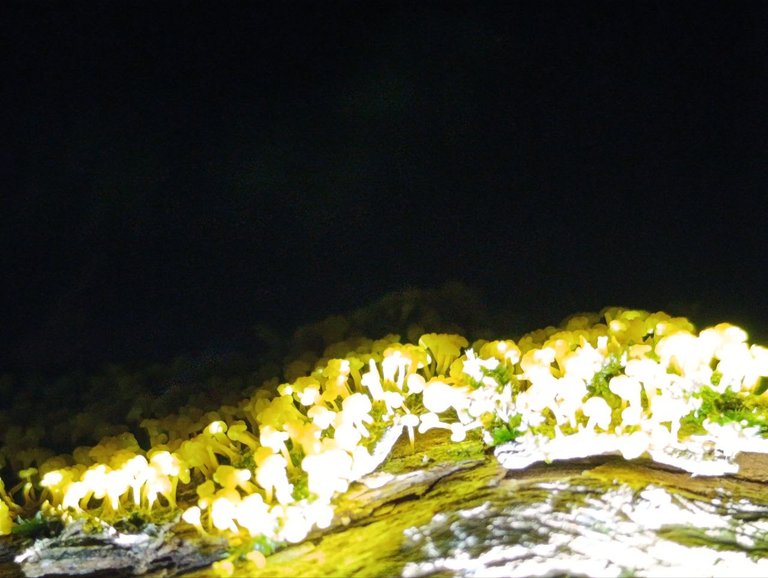
It looks nothing like scrambled eggs to me, nor any dog barf I've seen thankfully.
Now "Flowers of Tan," is a nickname that I can get behind. Decaying bark rich in tannins, provide the ideal environment for this saprophyte, giving rise to the name.
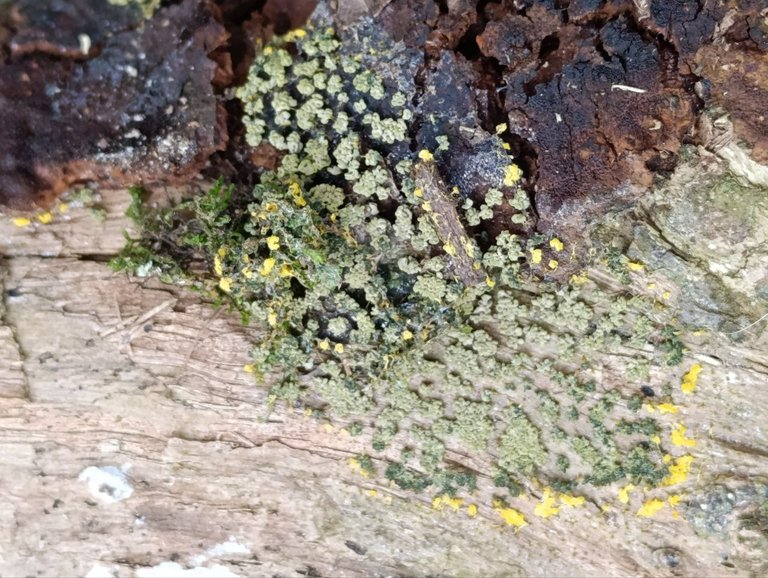
But it is not a true mold. Fuligo Septica as it is called, is a Protist of the class Myxomycetes.
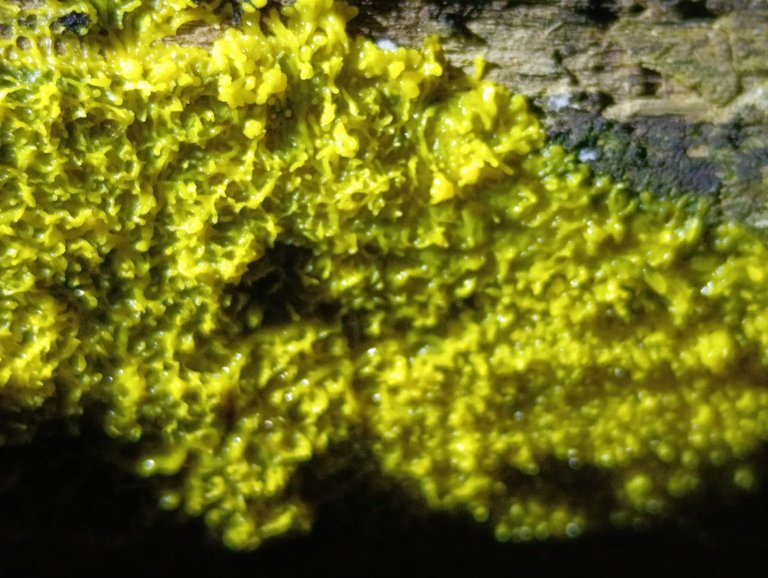
The yellow pigment fuligorubin A in which this specimen is abundant, has the awesome capacity to chelate metals into inactive forms.
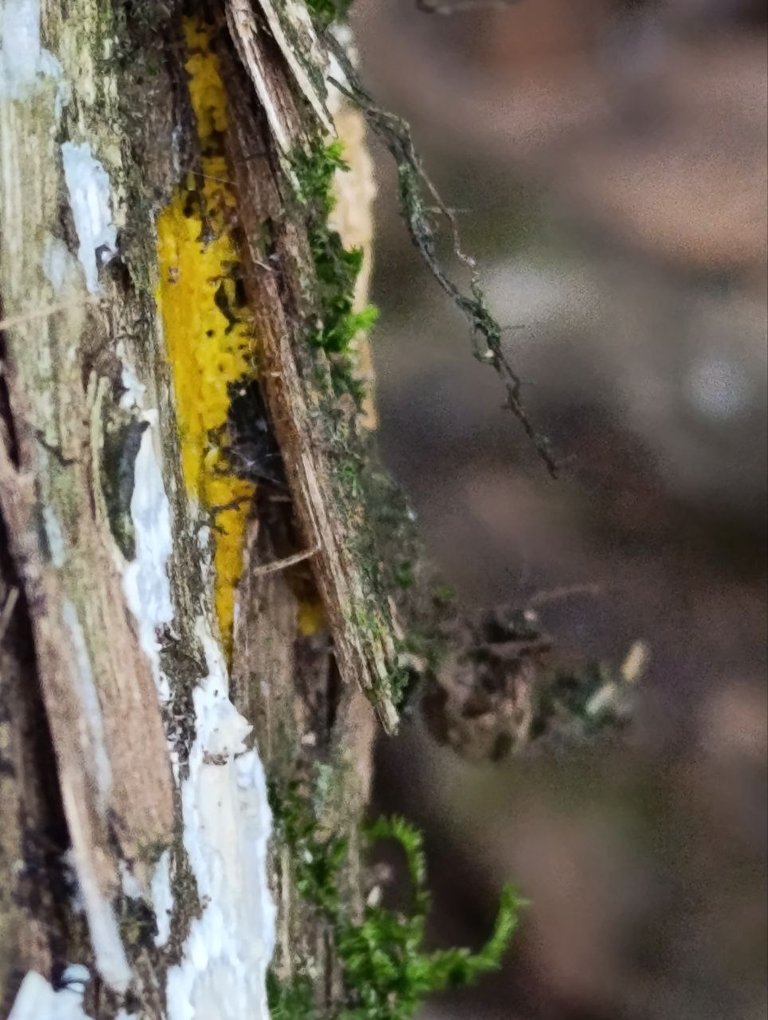
Much more akin to an amoeba than a fungus, Fuligo septica digests its food by encapsulating them with pseudopodia. Whereas fungi have cell walls and digest their food with exoenzymes prior to their ingestion...
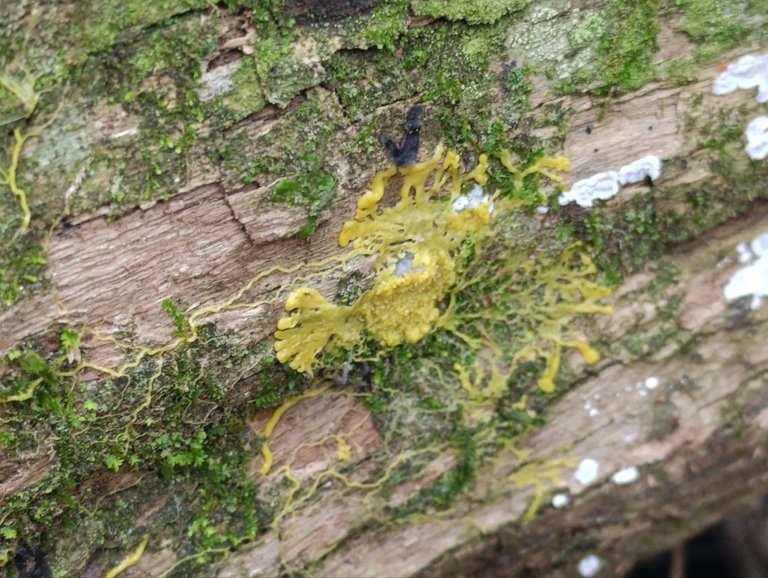
Fuligo septica are a plasmodium or a protoplasmic gob of goo with only a cell membrane. Its preferred eats are mostly bacteria.
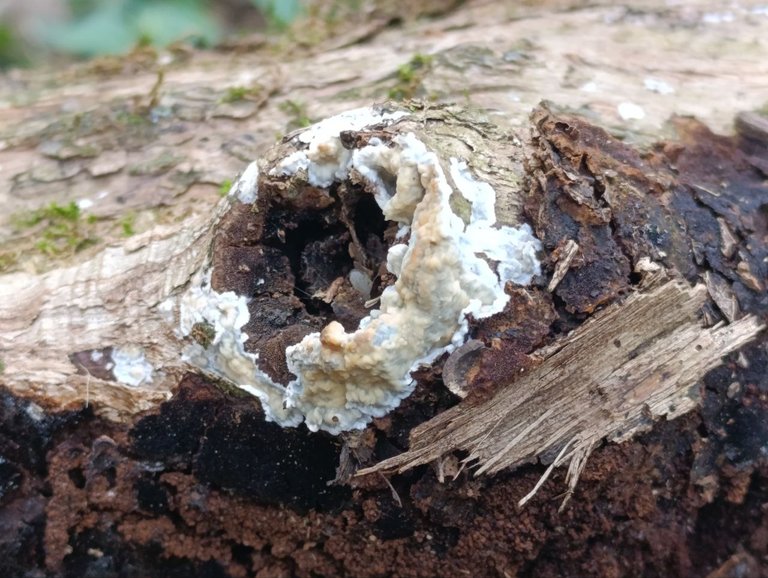
The fruiting bodies of Fuligo septica are usually no larger than 2 mm. What luck to find these ones, a good 5 mm tall...Arent' they incredible lit up in the night by my spectacular little flashlight.
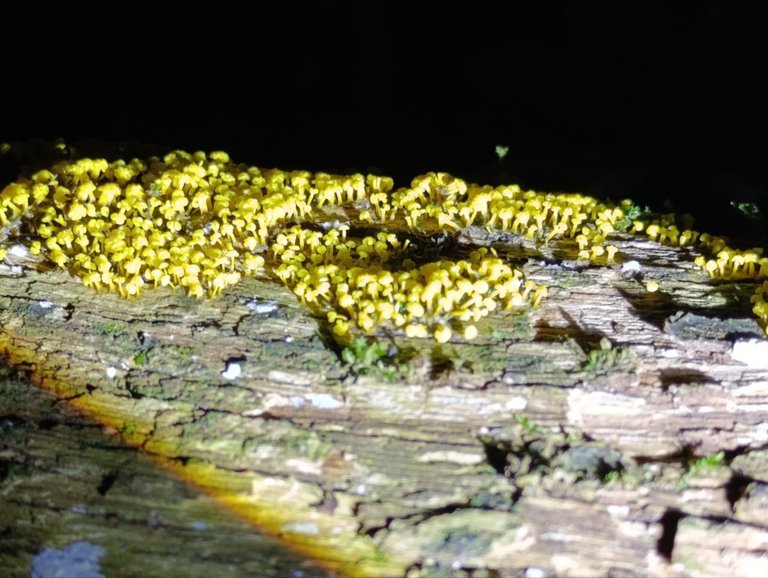 Next they produce spores which germinate to form myxamoebae or flagellated swarm cells and goop-out all over again:
Next they produce spores which germinate to form myxamoebae or flagellated swarm cells and goop-out all over again:
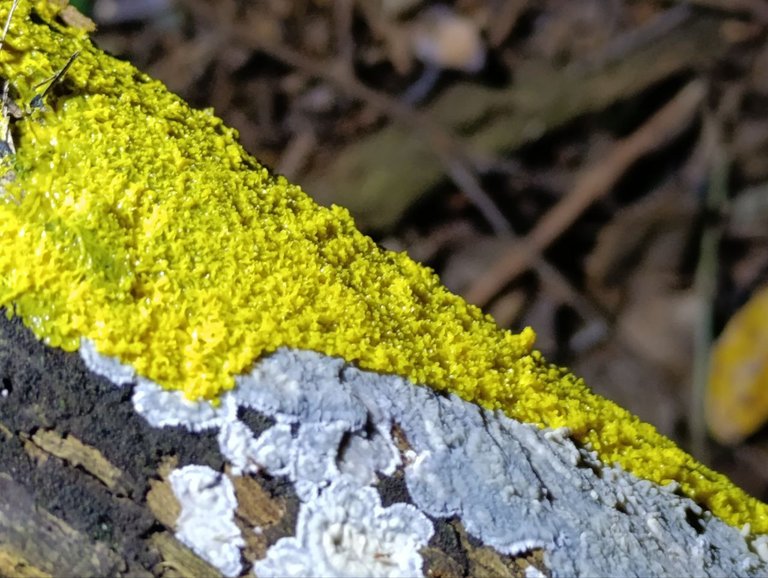
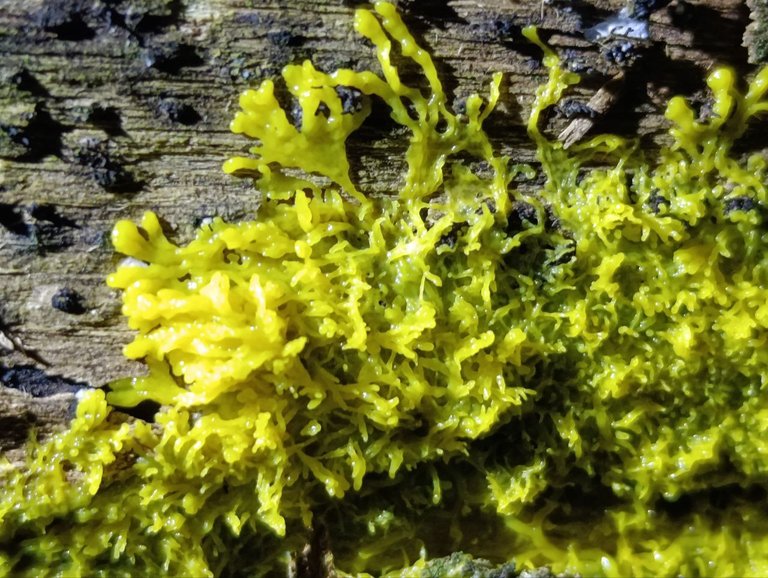
Although I haven't published every single day, I've been photographing the progress daily...and the day before yesterday, at night.
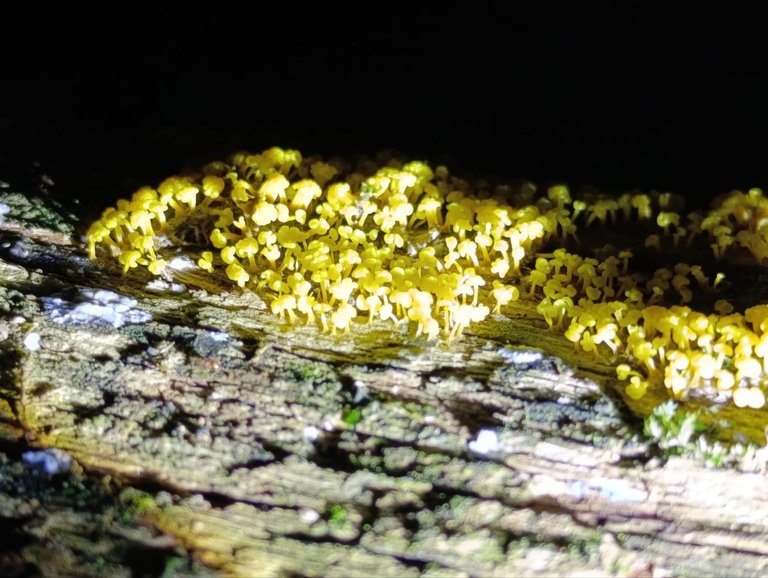
So here you are witnessing the entire life cycle...If you look back to my initial post by clicking here, when I thought it was a simple yellow mycelium. The first photos are from May 19th, so we've been watching it for a week.
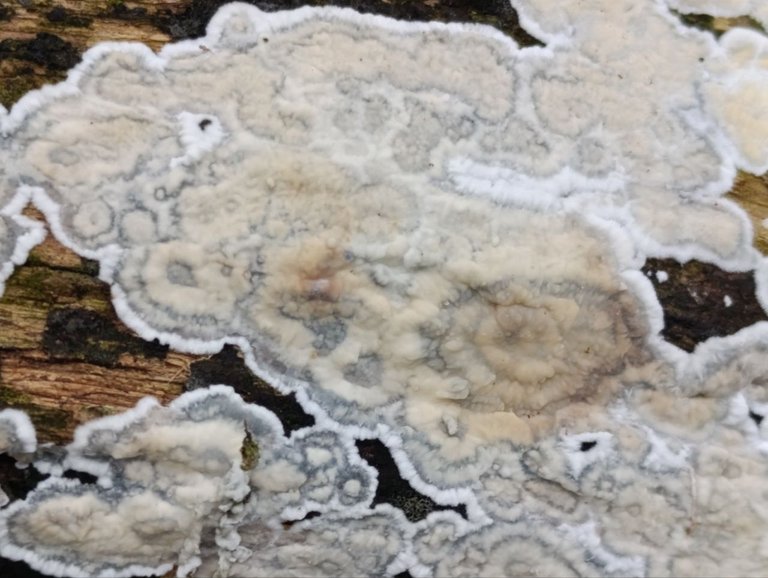

When I saw no more bright yellow, only white beige opalescent ovalish shapes and the brown and black blobs which seemed like an ultimate phase, I assumed that would be the end of it. But the very next day, the beautiful fuligorubin A, veining had returned.
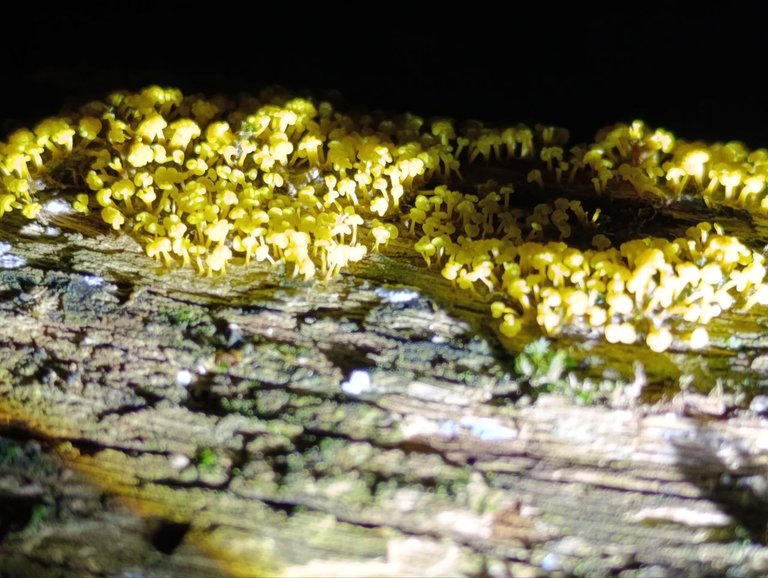
Now if you will allow me, I'd like to slither about a bit myself.
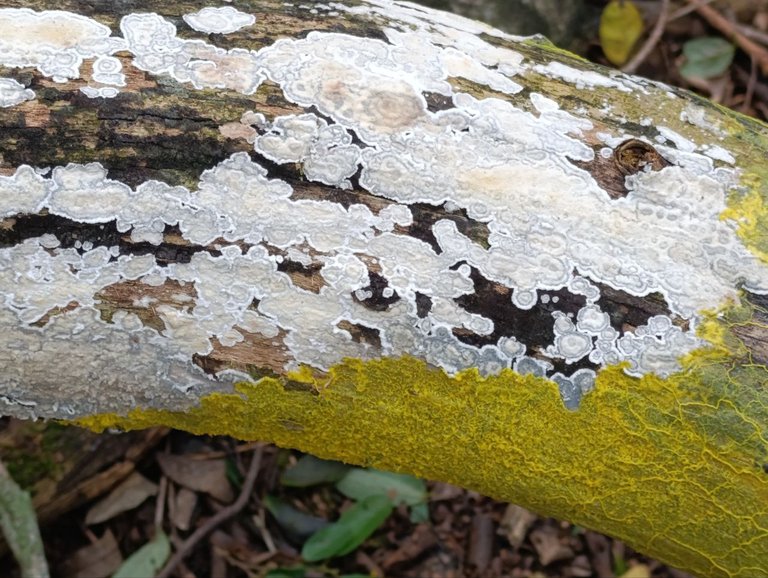
Is there anything that is not Sacred...Is there anything that is not Intelligence...Ain od milvado
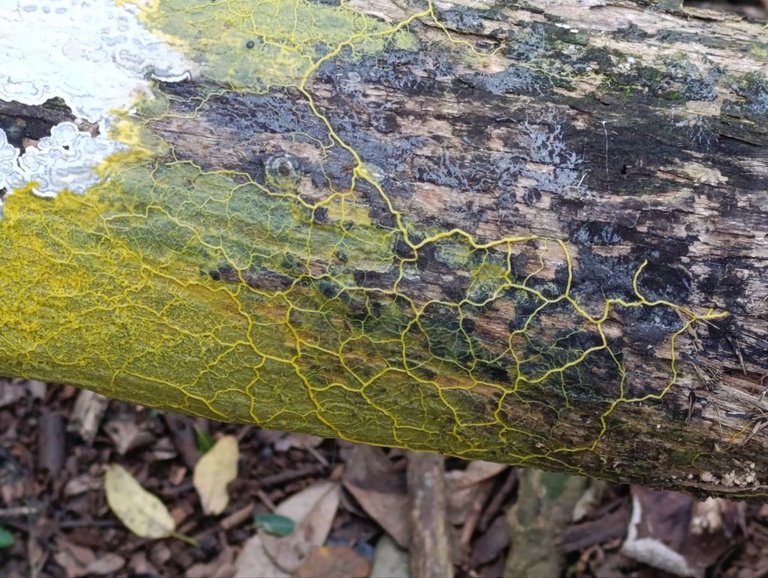
This brings to mind the work of Lynn Margulis. I hope you know who she is. Otherwise find out.
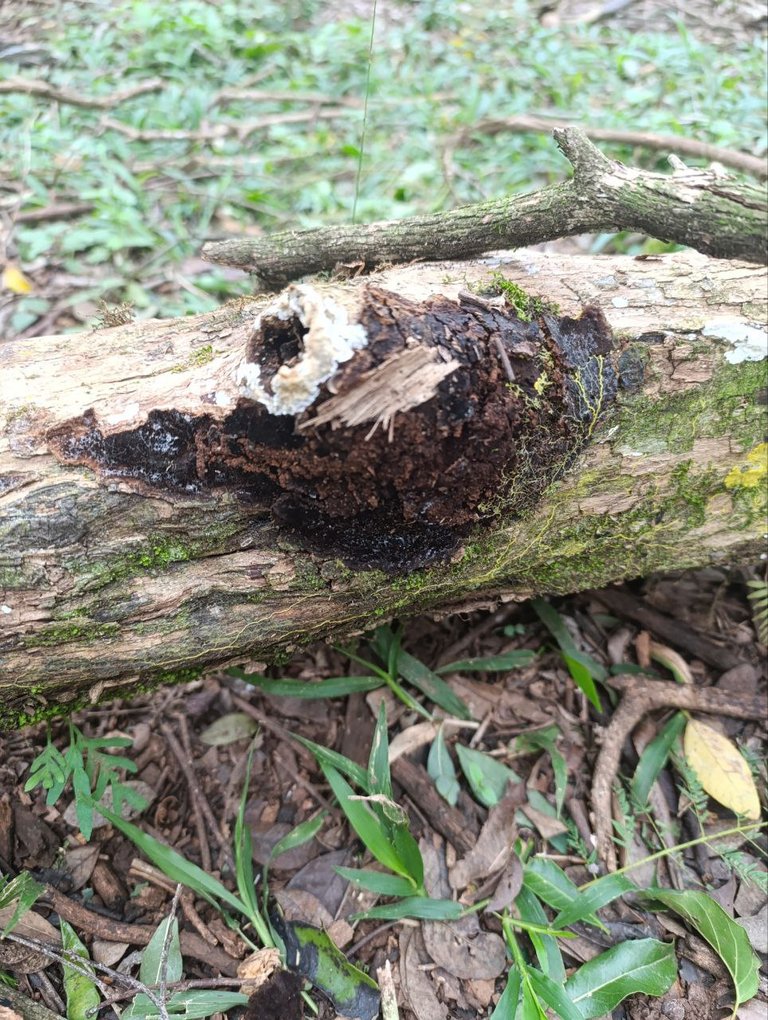
Better yet, read her books and those co-written with her son, Dorion Sagan. You will be glad to have read them.
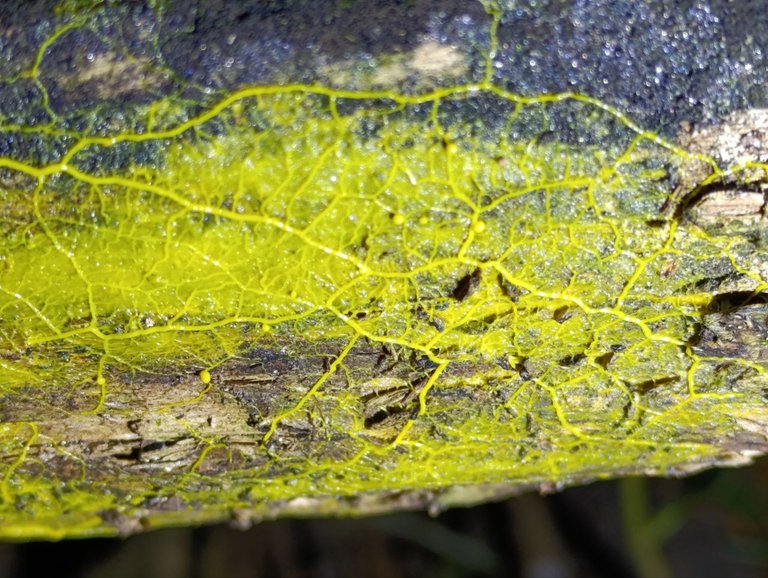
They say the plasmodium comes out at night...and that's when the freaks come out to collect it in Mexico apparently, where it is cooked and eaten. (I mean no offense. I'm a freak myself.)
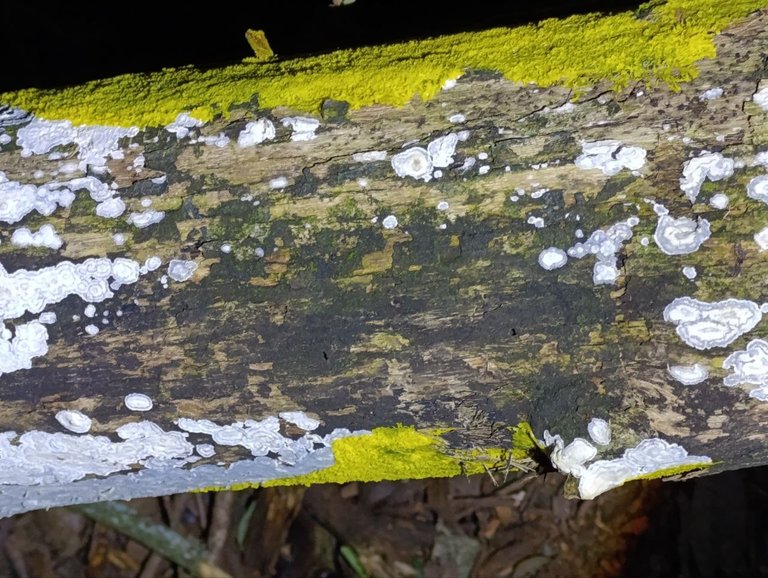
Maybe I'll gather some tonight and fry it up tomorrow...almost certainly to be eating alone.
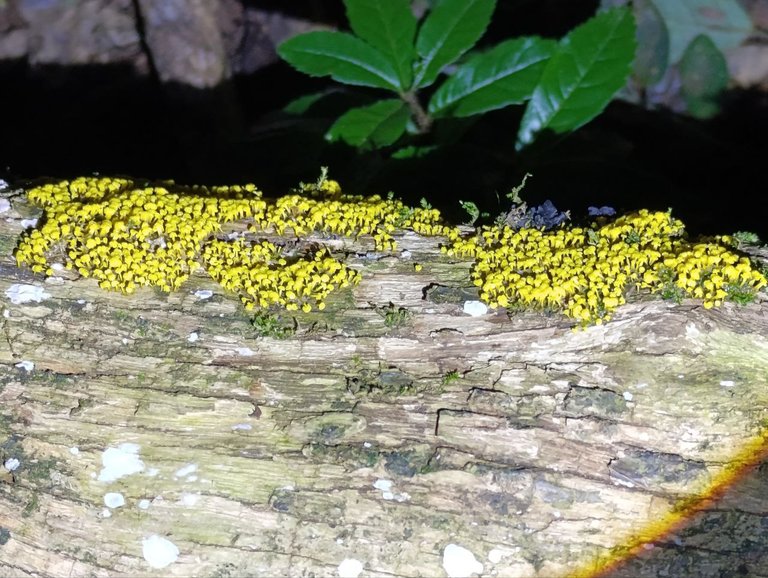
Interesting Links:
https://en.wikipedia.org/wiki/Fuligo_septica
https://fossilsandotherlivingthings.blogspot.com/2021/09/consciousness-and-intelligence-in.html
https://www.sciencedirect.com/science/article/pii/S0303264721000642
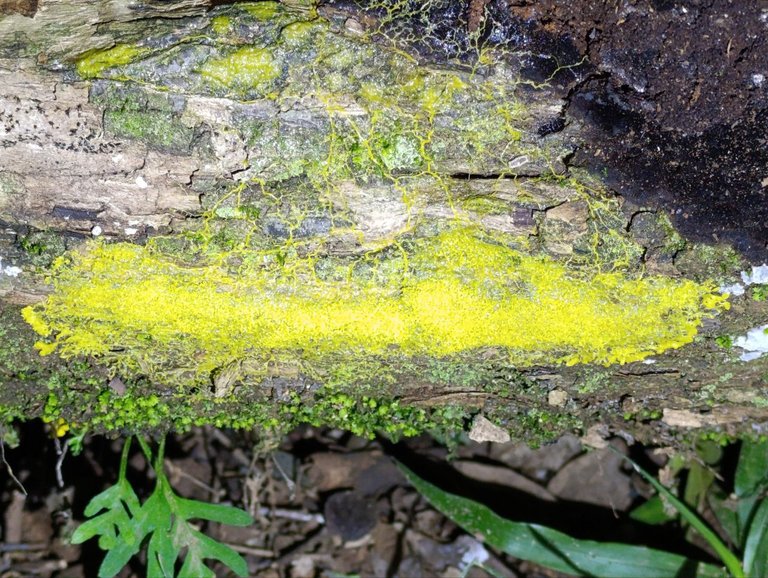
En Espanol:
Gracias @nikv para la identificación de la baba amarilla molde, hoy en día clasificado como un protista ...
No he visto un molde de limo en tanto tiempo, que no tenía un teléfono celular

No se parece en nada a los huevos revueltos a mí, ni cualquier perro vómito que he visto afortunadamente.
Ahora "Flores de Tan," es un apodo que puedo conseguir detrás. Corteza en descomposición rica en taninos, proporcionan el ambiente ideal para este saprofito, dando lugar al nombre.

Pero no es un verdadero moho. Fuligo Septica, como se le llama, es un protista de la clase Myxomycetes.

El pigmento amarillo fuligorubina A en el que abunda este espécimen, tiene la asombrosa capacidad de quelar metales en formas inactivas.

Mucho más parecido a una ameba que a un hongo, Fuligo septica digiere sus alimentos encapsulándolos con pseudópodos. Mientras que los hongos tienen paredes celulares y digieren sus alimentos con exoenzimas antes de ingerirlos...

Fuligo septica es un plasmodio o una sustancia viscosa protoplasmática con sólo una membrana celular. Se alimenta principalmente de bacterias.

Los cuerpos fructíferos de Fuligo septica no suelen medir más de 2 mm. Que suerte encontrar estos, de unos 5 mm de alto...No son increibles iluminados en la noche por mi nueva y espectacular linterna.
 A continuación producen esporas que germinan para formar mixamoebas o células flageladas en enjambre y goop-out todo de nuevo:
A continuación producen esporas que germinan para formar mixamoebas o células flageladas en enjambre y goop-out todo de nuevo:


Aunque no he publicado todos los días, he estado fotografiando el progreso diariamente... y anteayer, por la noche.

Así que aquí estáis siendo testigos de todo el ciclo vital...Si echáis la vista atrás a mi post inicial pinchando aquí, cuando pensaba que era un simple micelio amarillo. Las primeras fotos son del 19 de mayo, así que llevamos una semana observándolo.


Cuando ya no vi más amarillo brillante, sólo formas ovaladas opalescentes de color beige blanco y las manchas marrones y negras que parecían una última fase, supuse que sería el final. Pero al día siguiente, la hermosa fuligorubina A, veteado había regresado.

Ahora, si me lo permites, me gustaría deslizarme un poco.

¿Hay algo que no sea Sagrado...¿Hay algo que no sea Inteligencia...Ain od milvado

Esto me trae a la mente el trabajo de Lynn Margulis. Espero que sepas quién es. Si no, infórmate.

Mejor aún, lee sus libros y los que escribió con su hijo, Dorion Sagan. Se alegrará de haberlos leído.
foto_2025-05-26
Traducción realizada con la versión gratuita del traductor DeepL.com
Me encantan las críticas constructivas. Me ayuda a crecer. Con autenticidad. Por favor, critica mi escritura, fotografía, etcétera. Los comentarios que me parezcan que mejoran mi experiencia en Hive y que considere que pueden ser beneficiosos para otros, por ejemplo para iniciar una conversación, y los comentarios que me inspiren a mí o a otros a profundizar en otras ideas o temas, etcétera, recibirán votos positivos.
I love constructive criticism. It helps me grow. Authentically. Please do critique my writing, photography, etcetera. Comments which I find ameliorate my experience on Hive and consider to be potentially beneficial to others, conversation starting for example and comments that inspire me or others to delve into other ideas or subjects etcetera...will be upvoted.
I write what you read here and I make the fotos and videos with a redmi note 13 pro
DeepL is my preferred traductor for translating my writing from spanish to english and/or english to spanish.
Lots of love. thanks for journeying with me
Congratulations @melibee! You have completed the following achievement on the Hive blockchain And have been rewarded with New badge(s)
Your next target is to reach 800 comments.
Your next target is to reach 700 replies.
You can view your badges on your board and compare yourself to others in the Ranking
If you no longer want to receive notifications, reply to this comment with the word
STOPHi Meli!. It's a pleasure to meet you through your words, as well as sharing here one of the most interesting posts I've ever read. I don't know if you know that there is actually a community that is dedicated to mushrooms here on Hive, but sharing it on Amazing Nature is also very special. It has always caught my attention, but I hardly ever look at them let alone photograph them because I don't have mushrooms within reach, or maybe I don't know how to identify them when I'm hiking, but I love seeing all these textures and how it grows over time. It's good that you follow up, in fact I will follow you to try not to miss that process. Thank you for sharing this adventure, have a great week! ✌️
I have picked this post on behalf of the @OurPick project! Check out our Reading Suggestions posts!
Please consider voting for our Liotes HIVE Witness. Thank you!
¡Enhorabuena!
✅ Has hecho un buen trabajo, por lo cual tu publicación ha sido valorada y ha recibido el apoyo de parte de CHESS BROTHERS ♔ 💪
♟ Te invitamos a usar nuestra etiqueta #chessbrothers y a que aprendas más sobre nosotros.
♟♟ También puedes contactarnos en nuestro servidor de Discord y promocionar allí tus publicaciones.
♟♟♟ Considera unirte a nuestro trail de curación para que trabajemos en equipo y recibas recompensas automáticamente.
♞♟ Echa un vistazo a nuestra cuenta @chessbrotherspro para que te informes sobre el proceso de curación llevado a diario por nuestro equipo.
🥇 Si quieres obtener ganancias con tu delegacion de HP y apoyar a nuestro proyecto, te invitamos a unirte al plan Master Investor. Aquí puedes aprender cómo hacerlo.
Cordialmente
El equipo de CHESS BROTHERS
It’s really nice to follow the life cycle of creatures like Fuligo septica, which reveal the hidden beauty and complexity of nature around us.
I didn't know these mushrooms were edible. Did you cook them? What do they taste like?
I didn't harvest any. Last night was a difficult walk back to try to stop..I had many things in my hands to carry and the big dog, Lovey, wanted to hunt a comadreja... Which he did catch after we got to the house and I let him off of the rope. Ha
Oh I see. Maybe next time you harvest them
Maybe.... I'll let you know
What a beautiful post, quite instructive, and I learned a lot here. I'd never seen some of them before. It's incredible, but these only exist mostly because of humidity. Lichens and fungi don't thrive in environments without humidity.
Thanks so much! I'm glad you enjoyed it. The dank weather had been lovely. It's not overwhelmingly wet.. At least not to me.. But out in the little woods, it means lots of mushrooms and happy plants. It's so full of life.
I'd never seen some of them before. It's crazy! your post is really good and the photos too! terrific work dear friend!
Thank you so much. You're very kind
Greetings @melibee ,
How very interesting and to think it is edible...I wonder...are any animals interested in it....or must heat be applied in order to be edible.
Thank you for peaking our interest in this subject of fuligo.
Kind Regards,
Bleujay
I haven't seen any critters reading it.. Or seen that it was noticeable nibbled upon, as you sometimes see those obvious signs on a mushroom cap, for instance... But I know that the most common pollinators are some type of beetle...I don't recall their name now... And I don't know if they visit to much on them.. Or just happen to maybe also consume the decaying wood that the fulugo also ready from...
Thanks for engaging @Bluejay
My pleasure....
Saludos @melibee, lindas fotos, en la zona donde vivo muy poco se ven hongos.
Feliz fin de semana!